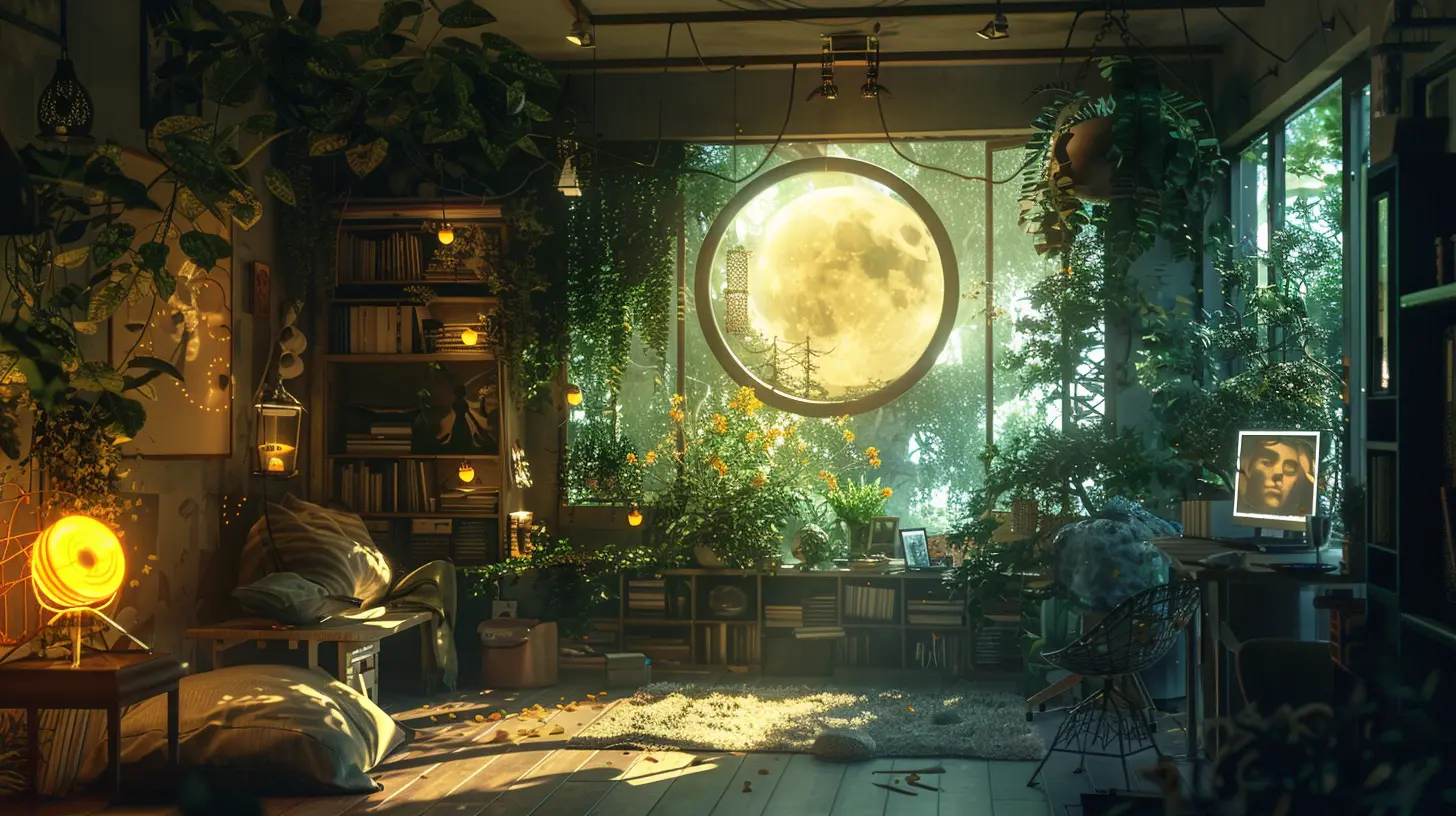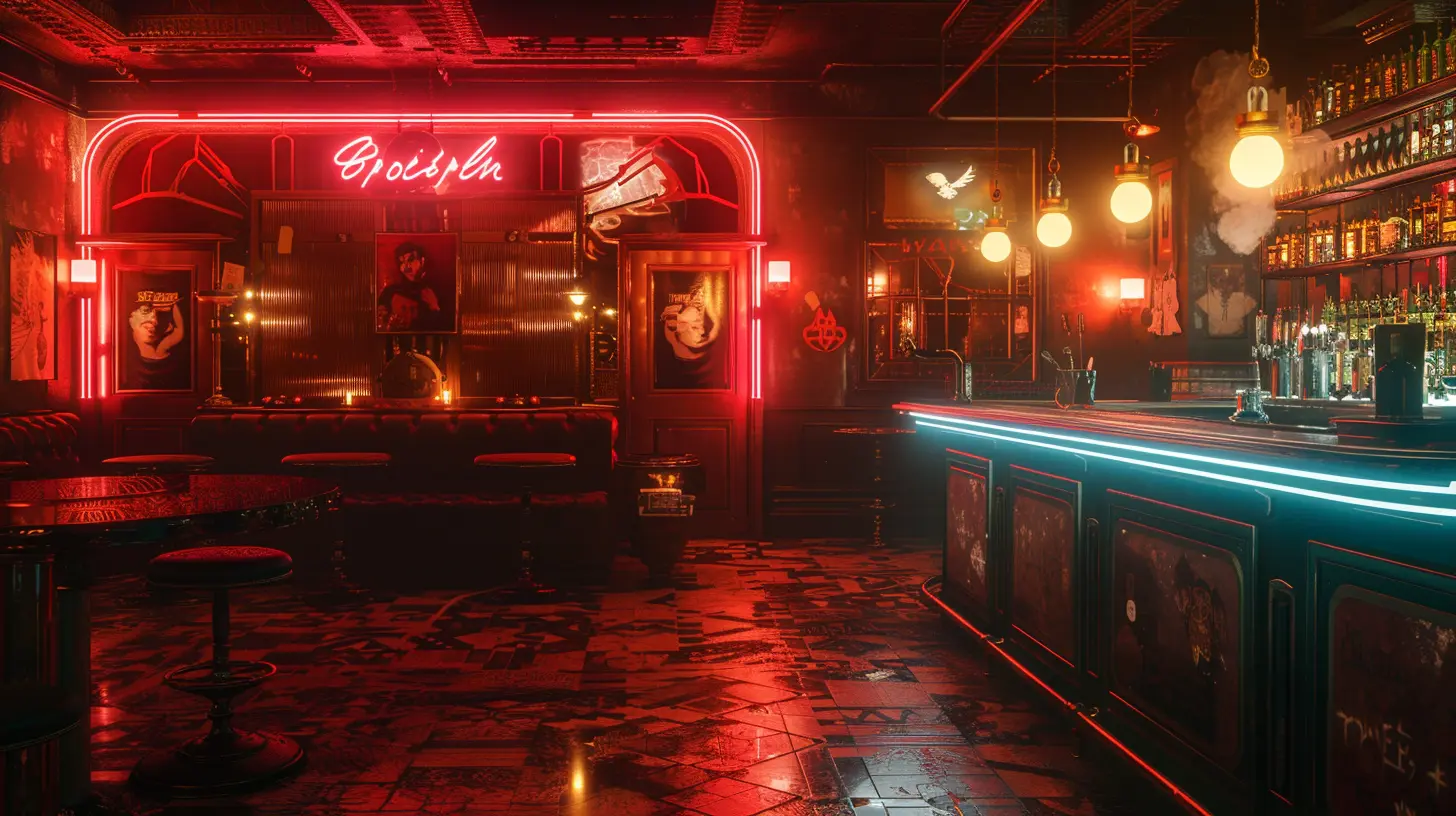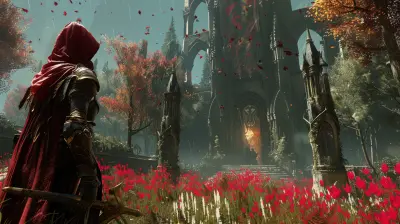24 March 2025
Have you ever wandered through a dimly lit forest in a video game and felt your heart race? Or walked into a sun-drenched field and felt a sense of calm wash over you? That’s the power of lighting in gaming. It’s not just about making things visible; it’s about creating emotions, setting the stage, and immersing players into storytelling. But why does lighting play such a critical role in gaming atmospheres? Let’s dive headfirst into this glowing topic and break it all down. 
Why Lighting Matters So Much in Gaming
In the simplest terms, lighting in games is like the unsung hero of immersion. Sure, game mechanics, storylines, and graphics often steal the spotlight (pun intended), but without the proper lighting, none of them would feel quite right.Imagine playing a horror game where every room is as bright as an operating theater. Spooky vibes? Nope, gone. Or picture an epic fantasy quest where the sun never sets, and shadows don’t dance realistically. It would feel incomplete, wouldn’t it? Lighting shapes the entire experience. It’s what sets the mood, guides your eyes, and often tells part of the story before a single word is spoken. 
Setting the Mood: How Lighting Affects Emotions
Let’s face it—video games are a lot like movies. They need to make you feel something to keep you engaged. And lighting? It’s like the emotional thermostat of any game.Think about a survival horror game like Resident Evil. The dim, flickering lights in an abandoned hospital scream, “You’re not welcome here!” Your shoulders tighten, and every creak makes you jump. Now compare that to a game like The Legend of Zelda: Breath of the Wild. The soft golden glow of sunsets draped over Hyrule feels warm and inviting, doesn’t it? Lighting sets the emotional tone. It tells you, “Hey, this is safe,” or “Get the heck outta here!”
The Science Behind It All
It’s not just your imagination. Lighting taps into our primal instincts. Humans are hardwired to associate certain types of lighting with emotional triggers. Warm tones (oranges, yellows) tend to make us feel safe and cozy, while cold, blue tones evoke sadness or isolation. And don’t even get me started on shadows—they create mystery, suspense, and an undeniable sense of foreboding. It’s like nature’s way of keeping us on edge.
Storytelling Through Lighting
Good lighting doesn’t just stop at setting emotions; it also tells stories. Ever noticed how in games like The Last of Us, the lighting changes as the story shifts? During calm moments, you’ll likely find soft natural light streaming through windows. But during chaotic or emotional scenes, the lighting becomes harsher, more dramatic.Games use lighting to communicate things subtly. Maybe you’re following a glowing path in a dark forest, or perhaps the villain’s lair is drenched in ominous red hues. These choices aren’t random—they’re intentional. Lighting acts as a silent narrator, guiding you through the plot without uttering a single word.
Dynamic Lighting: A Game-Changer
Dynamic lighting is like the cherry on top of storytelling. It changes in real-time, adapting to the environment and the player’s actions. Think of Minecraft—the way the sun sets and night falls creates a sense of urgency. Or take Red Dead Redemption 2: when storm clouds gather, and shadows stretch across the land, you feel the tension rising, almost as if the world is alive.
Guiding the Player
Alright, let’s talk about something we all hate—getting lost in a game. Ever been in a dungeon and thought, “Where the heck am I supposed to go?” Lighting is often the solution.Developers use lighting to guide players subtly. In Portal 2, for example, areas you need to explore are often lit up, while irrelevant sections fade into the shadows. In Uncharted, golden hues often highlight climbable surfaces. It’s like having a neon sign pointing the way without breaking the immersion. You don’t even notice it’s happening—it just feels natural, like a gut instinct pulling you forward.
Light as a Breadcrumb Trail
In many open-world games, lighting highlights points of interest. A beam of light might direct you to a treasure chest, or a glowing doorway might scream, “Hey, the boss fight’s in here!” It’s subtle, but once you notice it, you’ll start to appreciate just how clever developers are with these tricks.Taking Realism to the Next Level
Gamers are demanding—like, really demanding. And fair enough! In a world where 4K resolutions and ray tracing are the norm, lighting needs to be spot-on to feel realistic.Enter Ray Tracing
Let me geek out for a second here. Ray tracing has been a game-changer for lighting in modern games. It’s a rendering technique that simulates how light behaves in the real world. Basically, it calculates light rays bouncing off surfaces to create hyper-realistic reflections, shadows, and ambient lighting.In a game like Cyberpunk 2077, ray tracing makes neon signs glow naturally and puddles reflect the vibrant cityscape. It’s like stepping into Blade Runner, but you’re the main character. Without realistic lighting like this, even the most detailed textures would look… flat.
Ambient Occlusion and Volumetric Lighting
Buzzwords alert! But I promise they’re worth mentioning. Ambient occlusion is a fancy term for making shadows look more realistic by considering how light interacts with nearby objects. Meanwhile, volumetric lighting is all about the “rays” you see streaming through the trees or breaking through fog. These techniques add depth and texture, making worlds feel lived-in and real.How Lighting Enhances Different Game Genres
Let’s switch gears a bit. Lighting isn’t just a one-size-fits-all thing—it changes depending on the type of game.Horror Games
In horror, lighting is everything. EVERYTHING. Darkness builds suspense, shadows hide threats, and sudden bursts of light can terrify. Take Amnesia: The Dark Descent: the darkness feels like an enemy in itself, while your lantern becomes a fleeting lifeline.RPGs and Adventure Games
Here, lighting is more about telling a story and creating a sense of wonder. Think of Skyrim: the auroras dancing in the night sky make you feel like you’re part of something magical. Or the flickering torches in ancient ruins that whisper stories of civilizations past.Shooters and Action Games
High-paced games like Call of Duty or Halo use lighting for clarity and intensity. Bright explosions, contrasting shadows, and directional lighting ensure you’re focused on the action while still feeling the chaos of the battlefield.Puzzle Games
Surprisingly, even slower-paced puzzle games rely heavily on lighting. Games like Inside use stark contrasts between light and dark to create tension and direct focus. Every beam of light feels intentional, as if it’s daring you to step forward.The Future of Lighting in Gaming
So, where’s it all heading? If current trends are any indication, lighting tech is only going to get better. With advancements in hardware and software, developers are unlocking new ways to play with light.Think about VR gaming. Lighting in VR has to mimic real life even more closely; otherwise, it breaks immersion. Imagine standing in a virtual room where the sun doesn’t cast shadows properly. It’d feel… off, right? Future lighting systems will continue to blur the line between games and reality.
Plus, procedural lighting (where light adapts dynamically to player choices) is gaining traction. Imagine a game where your decisions change the lighting—not just the story. Make a heroic choice, and the world might literally brighten. Opt for the villain’s path, and shadows could start creeping in. Creepy? Sure. Cool? Absolutely.
Wrapping Up
Alright, so here’s the bottom line: lighting in games isn’t just there to make things look pretty. It’s an essential tool that shapes atmosphere, directs players, and tells stories in ways words simply can’t. Whether it’s the haunting gloom of a horror title, the calming warmth of an RPG, or the adrenaline-pumping flashes in an action game, lighting is as much a character as the heroes and villains we play.The next time you fire up your favorite game, take a second to look around. Notice how the light shifts, how it makes you feel, and how it silently nudges you through the experience. You’ll never look at gaming the same way again.





Ziva Navarro
Lighting can profoundly impact our emotional experience in games, creating immersive worlds that resonate with us. Thank you for exploring this essential aspect!
April 3, 2025 at 2:34 PM